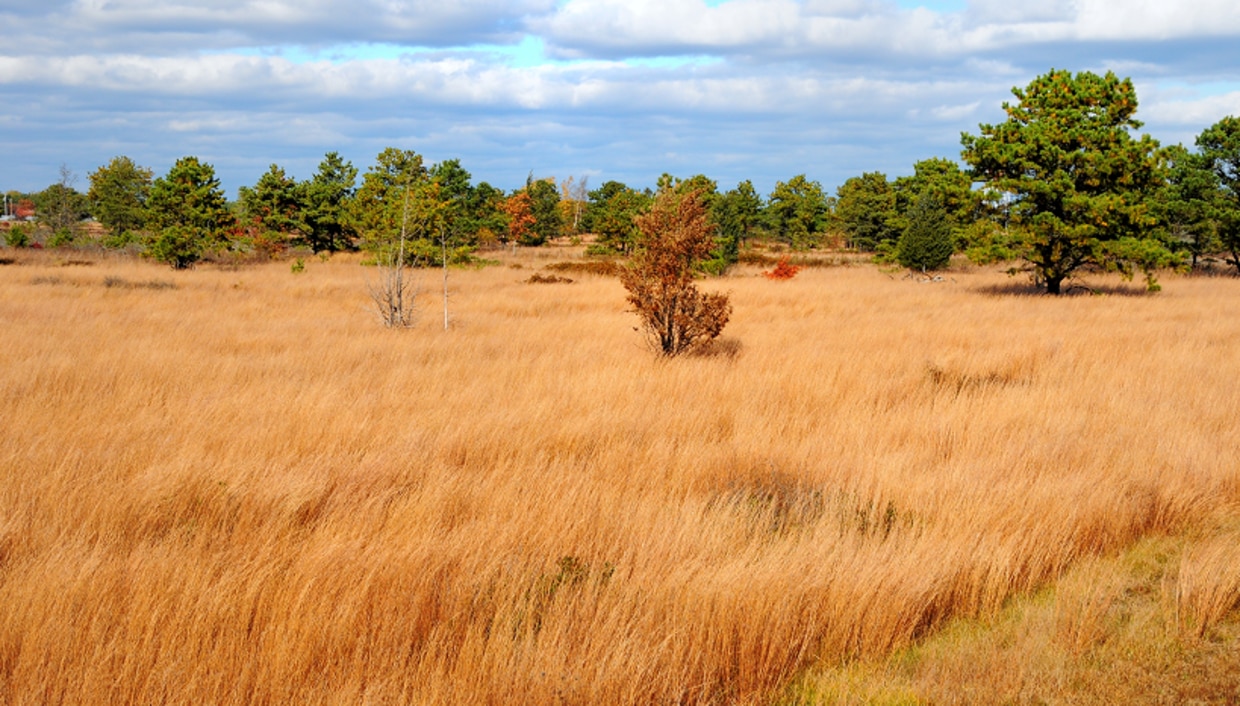History of the Massachusetts landscape
Open habitats (grasslands, shrublands and young forest) were part of the New England landscape for centuries prior to European colonization due to:
- ubiquitous beaver activity
- spring flooding and ice scouring along rivers and major streams
- wildfires and fires set by Native Americans in coastal areas and major river valleys
- occasional catastrophic windstorms
These open habitats started to decline after European colonization due to:
- extirpation of beaver from Massachusetts
- extensive development of roads and buildings in portions of the landscape that formerly supported abundant beaver activity
- flood control
- fire suppression (especially in portions of the landscape that supported fire-associated natural communities like pitch pine/scrub oak).
Human activity has also reduced the impact of wind storms across the landscape. Today’s forests are relatively young (75-90 year-old) compared to the old growth that once existed, which means that trees are more pliant and resistant to wind disturbance than original old growth forests. Forests are also fragmented by development in many portions of the landscape, which means that when wind disturbance does occur on forested lands, it is typically interrupted by adjacent development.
MassWildlife uses active management to provide a range of grassland, shrubland, and young forest habitats that are no longer created frequently enough by natural processes. Forestry practices, along with mowing, prescribed burning, and invasive plant control are often used to manage sites.
Wildlife in decline
Many kinds of birds, mammals, reptiles, insects, and plants thrive in or near open habitat types. The continuing decline of open grasslands, shrublands, and young forests has impacted a number of wildlife and plant species.
Native grassland and shrubland birds are declining at an alarming rate. Even some forest nesting birds are declining, despite the fact that Massachusetts has more forestland now (nearly 3 million acres) than at any time in the past 300 years. This is because some forest birds (e.g., chestnut-sided warbler) are specialized to nest in young forest, and because other forest birds (e.g., wood thrush) nest in mature forest but then move their young into shrubland and young forest habitats after fledging to utilize abundant food and cover found in these areas.
Reports from the yearly North American Breeding Bird Survey, Massachusetts Audubon Society’s 2013 State of the Birds report, and other published scientific articles, show that species including eastern towhee, field sparrow, and the brown thrasher are all showing alarming declines. Populations of upland sandpiper, vesper sparrow, and grasshopper sparrow (all classified as either Threatened or Endangered in Massachusetts) are also declining. It is clear that without the maintenance and creation of open habitat, birds that require this type of habitat will continue to decline.
Other animals and plants that rely on open habitats are in decline. The New England cottontail, Massachusetts’ only native cottontail (not to be confused with the eastern cottontail, which was introduced to the state in the early 1900s), was once common throughout all of the New England states; now it occurs only sporadically. The regal fritillary butterfly, once common, no longer occurs in the state. Black racer snakes and eastern box turtle rely on open habitats for various stages of their life cycle. In addition, many field and grassland plants including New England blazing star (a state Special Concern Species), sandplain gerardia (a state Endangered Species), and eastern silvery aster (a state Endangered Species) are becoming increasingly rare.
MassWildlife uses active management to provide a range of grassland, shrubland, and forested habitats that are no longer provided frequently enough by natural disturbance processes to help support both common and declining species. Forestry practices, along with mowing, prescribed burning, and invasive plant control are used to manage sites.
All New England states have outlined goals to increase open habitats and associated wildlife. Go to the Massachusetts State Wildlife Action Plan.
Habitat management and climate change
Although open canopy habitats are critical if we are to protect the full diversity of the Commonwealth’s natural heritage, MassWildlife is committed to managing the majority of the land it stewards as full canopy forest. Because of this commitment, and continuing forest growth, carbon accounting for MassWildlife-managed lands shows a net annual increase in carbon storage even after factoring in carbon release associated with active habitat management.
